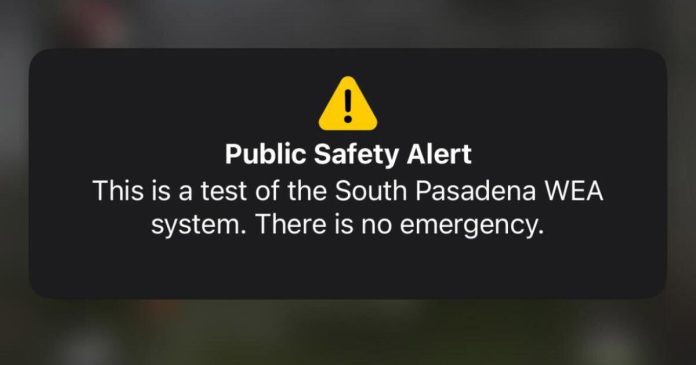Shortly before 6 p.m. Tuesday, phones across Los Angeles County lighted up with an emergency alert test, the latest example of challenges that government officials are experiencing with wireless emergency alert systems.
It wasn’t immediately clear how many people received the errant alert from South Pasadena, which read, “This is a test of the South Pasadena WEA system. There is no emergency.” South Pasadena officials said the test was supposed to remain in the city’s internal system but was mistakenly transmitted to the public. L.A. Times employees in Long Beach, downtown L.A. and Redondo Beach reported receiving the test.
Wireless emergency alerts are sent out through a partnership among the Federal Emergency Management Agency, the Federal Communications Commission, cellphone providers and local officials, who geographically code the alerts so they appear on phones in areas affected by public safety warnings.
The errant test was reminiscent of an alert that was erroneously sent to 10 million phones across L.A. County during the January firestorms, warning them to prepare to evacuate due to a fire. The alert was meant to be sent only to a small number of phones near Calabasas.
On Tuesday evening, public safety staff with the city of South Pasadena were performing an internal test of the WEA system when the message was accidentally sent to phones across the county, city spokesperson Jennifer Colby said.
The cause of the erroneous alert is under investigation. However, it is currently believed to be the result of human error and not a malfunction of the platform called Finalsite that the city uses to send alerts, she said.
Colby said the city apologized for the inconvenience caused by the mistake.
Any fallout from the accidental test alert probably is minimal, but the ramifications of similar mistakes can be serious during active emergencies.
For example, the erroneous alert that went out during the January firestorms stoked panic and confusion. That was compounded by “echoing alerts,” when the message pinged repeatedly and seemingly at random.
A federal report that looked into that alert issue found that the company contracted by the county to send out the emergency alerts, Genasys, experienced a technical issue that caused the initial, widespread alert. The “echoing” alerts were a symptom of cellphone providers experiencing overload due to the high volume and long duration of the alerts, the report found.







